For my 7-year-old son, a big appeal of catfishing is sniffing the various stink baits. These baits, that come in chunks or pastes, draw in catfish with their strong odors. This weekend’s flavor was blood, a truly eye-watering, nauseating concoction that catfish, and gross-out loving kids, find irresistible.
Many catfish species have the reputation for eating, well, just about anything. Anglers often marvel at just what a catfish will feed on.
But recently, researchers in the Chesapeake Bay found something much weirder than stink bait in a blue catfish’s stomach: the remains of a whole wood duck.
Noah Bressman, assistant professor of physiology at Salisbury University, first alerted me to this strange find. Bressman is a font of weird fish information, as he is an expert on fish that locomote on land like snakeheads. He has published a journal article on walking catfish foraging earthworms in shopping center parking lots.
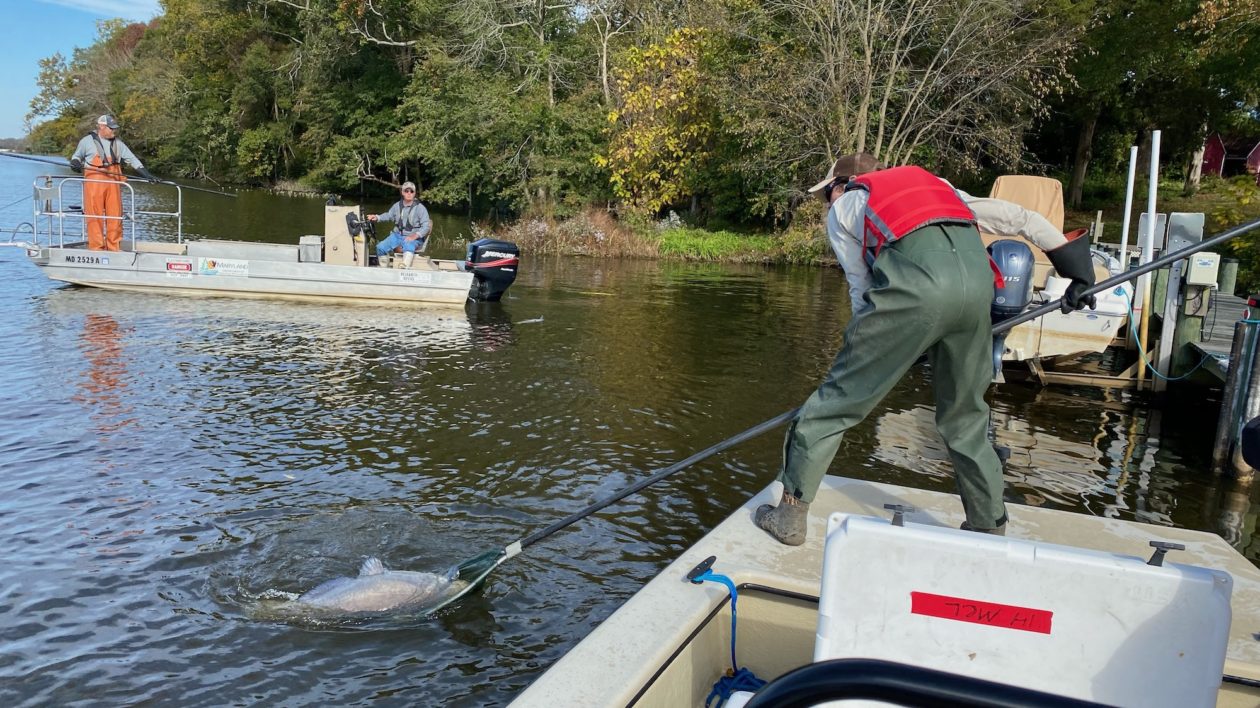
Currently, his lab is researching the dietary habits of blue catfish, a non-native species found in the Chesapeake Bay. His graduate student, Zachary Crum, had been out electrofishing for blue catfish with the Maryland Department of Natural Resources. That trip provided him 150 fish to process in the lab, analyzing stomach contents. A key focus is to determine what impacts invasive blue catfish are having on Chesapeake fish species of concern like alefwife, blueback herring and American and hickory shad.

As Crum sifted through the stomach contents of one large fish, he noted a large number of little, black, fuzzy objects.
“At first I thought the fish had a lot of parasites,” says Crum. “But when I looked more closely, I realized they were actually feathers. And then I could see the carcass.”
While partially digested, the top segment of the bill was intact, and the most likely species is wood duck.
It is difficult to know for sure if the blue catfish killed a live duck or was scavenging, but Crum notes that the carcass (aside from the digestion) was in pretty good shape, and didn’t show signs that it was decomposing before the fish ate it.
It’s certainly an unusual find; I have been unable to locate other records of blue catfish preying on ducks. That doesn’t mean that it doesn’t happen. And certainly, there is a rich literature (and folklore) of other fish preying on birds.
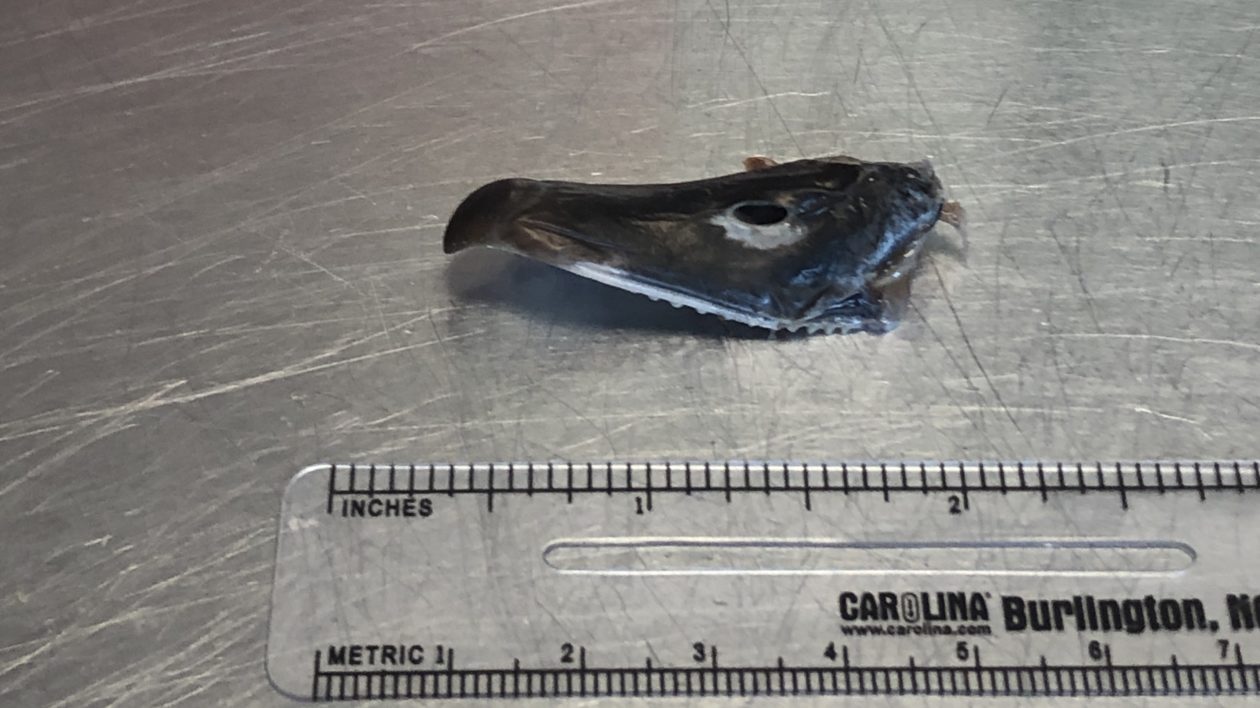
Fish Eats Bird
As an angler, I’ve heard the story countless times: a female duck and her young swam along a lake’s edge, pecking at grasses and insects. One duckling strayed a bit far from mother, and suddenly the water erupted in an explosive splash. The duckling vanished, the dinner of a startlingly large fish.
Most of the people who told such stories were what you might charitably call unreliable narrators. The stories were also almost never firsthand accounts, but something witnessed by a cousin’s best friend’s barber. These were, by and large, fishing tales.
A number of predatory fish will prey on ducklings. Largemouth bass, northern pike and similar species will not pass up an easy meal. Still, it is rarely a regular occurrence. In fact, studies on northern pike specifically conducted to see what impacts these fish were having on waterfowl found that northern pike were having no impact on waterfowl.
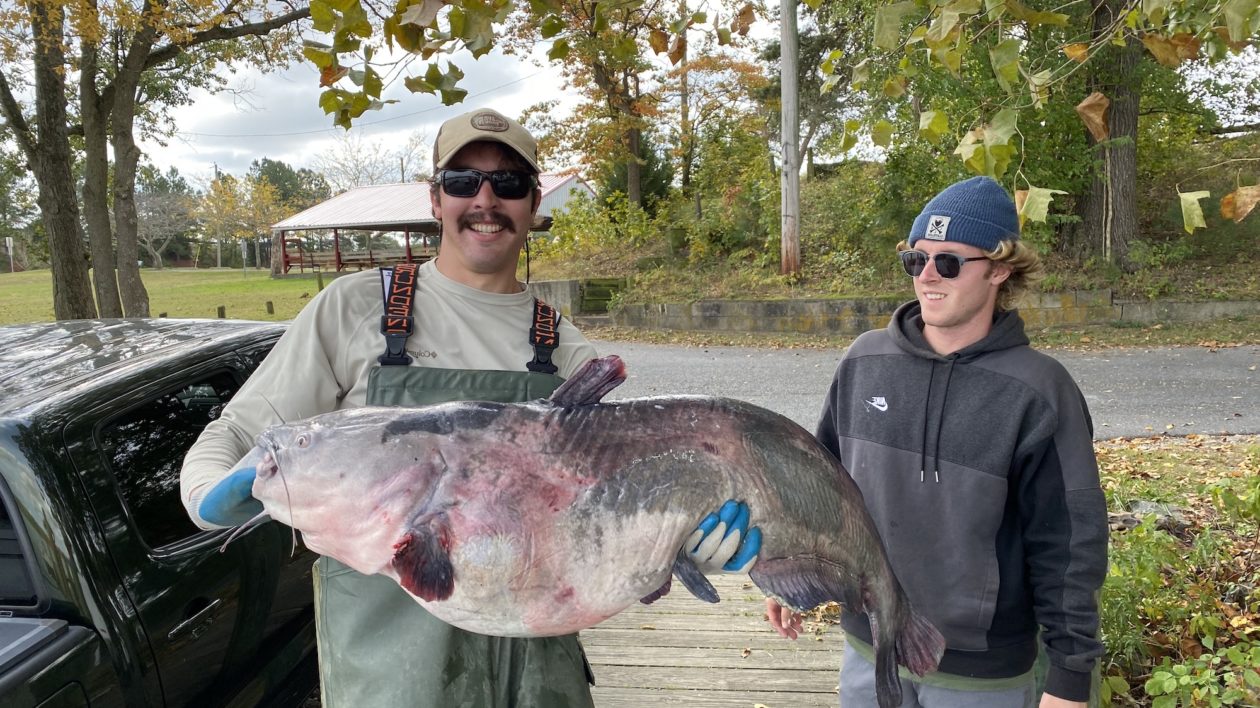
But there are instances where fish will key in on unusual prey including mammals and birds. Perhaps most notable are the wels catfish that hunt pigeons along the River Tarn in southwestern France.
The wels catfish is a predatory and adaptable species frequently featured on shows like River Monsters. It has been introduced well beyond its original range in Europe. It adapts readily to the local prey, but the River Tarn presents a wild twist.
Pigeons drink water from a river island, and the catfish hunt along the edges. The catfish lunges onto the gravelly water’s edge, beaching itself. It then grabs a pigeon and pulls it back into the water. Millions of viewers became familiar with this spectacle through the documentary Planet Earth II.
The catfish exhibit hunting behavior quite similar to orcas in Chile that beach themselves to kill seals.
These catfish can reach immense sizes. But science writer Ed Yong notes that it is generally the smaller catfish that hunt pigeons. Yong hypothesizes that the smaller catfish may find it easier to get back in the water after beaching themselves. (If you want more stories of predatory fish dining on birds, check out my previous blog).
In the case of the blue catfish, the wood duck was almost certainly a target of opportunity.
“Blue catfish are opportunistic generalists in their feeding,” says Crum. “They will eat whatever is in greatest quantity, or really, whatever is in front of them.”
In the right circumstance, that could mean a blue catfish feeds on a duck. But it also means bigger problems for native fish.
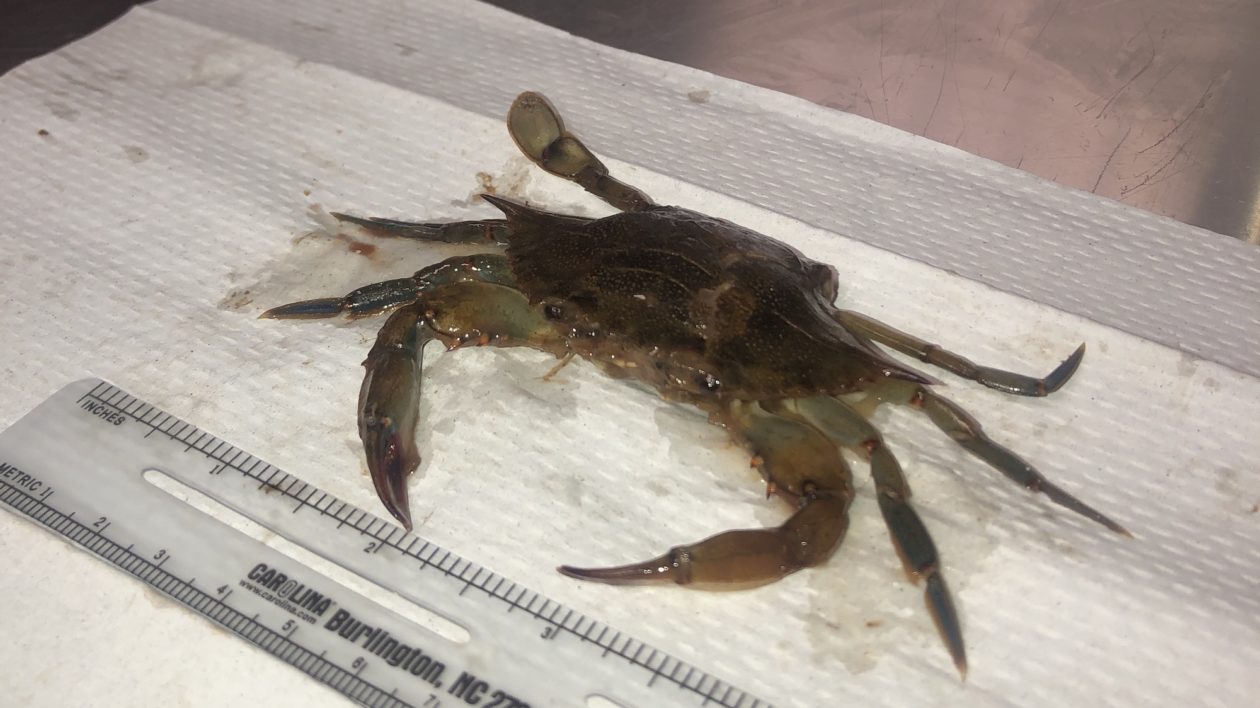
Tracking a Predator
Blue catfish are native to the Mississippi, Missouri and Ohio river systems. They were intentionally introduced into the Chesapeake Bay in the 1970s by fisheries managers.
“The bay at the time was in a degraded condition, and fisheries managers thought blue catfish could provide something for people to fish for,” says Crum.
The blue catfish immediately prospered. They were able to tolerate degraded conditions as well as fairly high salinity, so they were able to move through the Chesapeake Bay system. Today, they’re found in most of the major tributaries of the bay. They are now considered an invasive species. Compounding the challenge, the blue catfish also now have a constituency: a charter boat industry and individual anglers enjoy targeting trophy blue catfish.
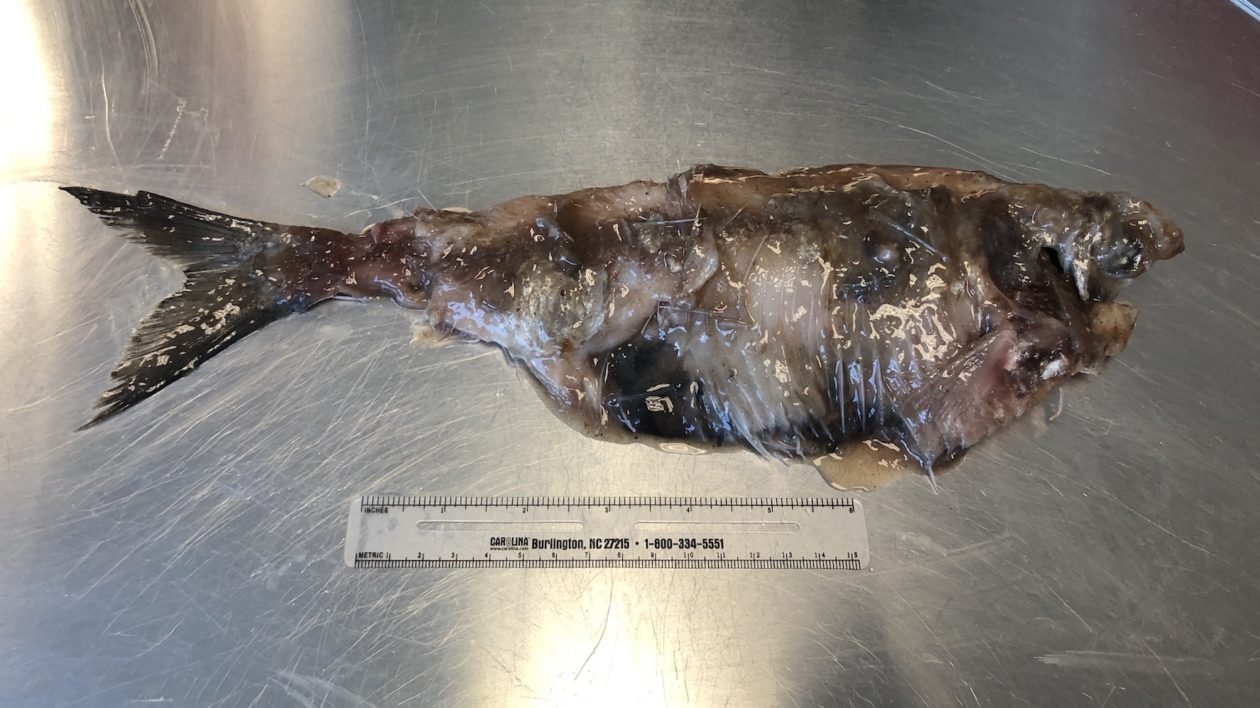
Maryland’s Nanticoke River, where Crum is conducting his research, does not yet have this developed sport fishery. Unlike many rivers in the system, it lacks human-made barriers, so blue catfish can move freely. The Nanticoke is also less developed than other rivers in the system. It offers an ideal environment to track the impacts these invasive catfish are having on native fish.
How are blue catfish affecting anadromous fish species in the bay? What are the management implications? Crum is in the early stages of research. I’ll cover his findings as they are published.
“Blue catfish are here to stay, but understanding them has management implications,” he says. “In the meantime, go fishing for them. And keep them.”
Since I talked to him, I’ll admit I’ve been looking over duck lures (yes, they exist). In any case, it will be interesting to see if other ducks turn up in blue catfish stomachs. Maybe it’s a rare occurrence. Or maybe you’ve seen something similar. Let us know in the comments.
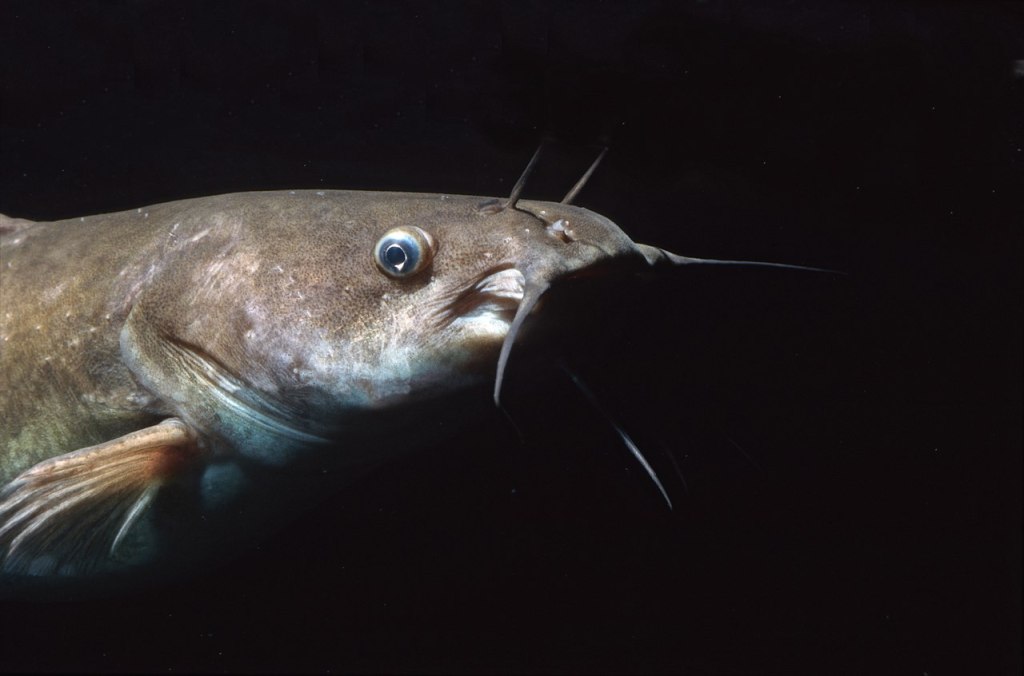



Interesting and informative article.
Fishing Friends and myself have seen Channel Catfish in a local private community lake eat Mallard Ducklings.. You’ll see the parents leading the ducklings in a swim and suddenly there will be a splash, you’ll see a grayish figure and one of the ducklings will be gone.. it’s happened a few times on this lake over all the times we get to fish it (flyfishing for Largemouth Bass & the Channel Cats).
Great article – as usual!!